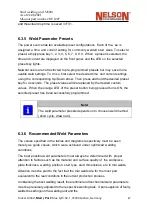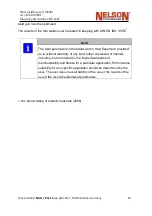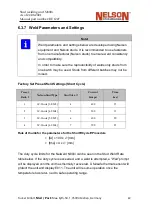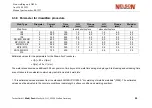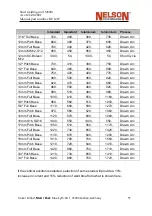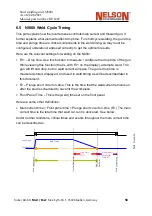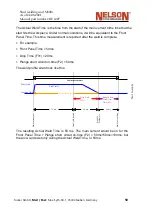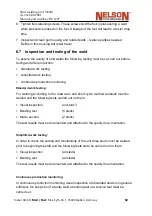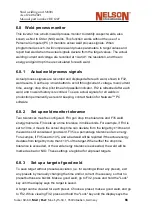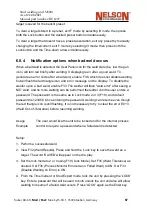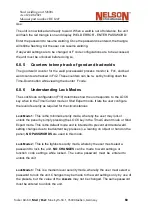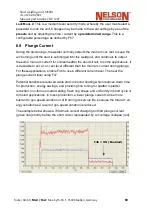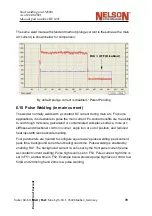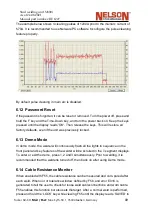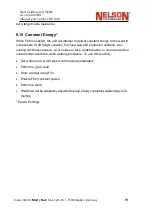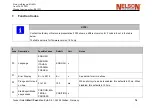
Tucker GmbH,
Mail / Post:
Max-Eyth-Str.1, 35394 Gießen, Germany
Stud welding unit N800i
As of 24.08.2021
Manual part number: BE 1227
61
6.6 Drop Time Variables
This portion of the document describes several different conditions that affect drop
time. This time duration will vary under many different conditions as outlined in the
text below.
Power Source Gun Control and Trigger Switch Circuit:
The rate in which the gun coil energy is removed plays a large part in how fast the
stud will drop. If the coil
only
has an anti
‐
parallel diode (in either the gun itself or
inside the power source), it will drop much later than a configuration with a
diode/resistor since the energy is dis
‐
sipated in the resistor after the coil is de
‐
energized.
Plunge Dampener:
Tranquil arc dampeners are meant to slow the rate of stud travel speed (in the
downward direction). Dampeners can adjust this rate for up to a few hundred
milliseconds of travel time.
Temperature:
As temperatures rise, dampeners have less of an impact. They allow the stud to fall
nearly 65% faster at 90 degrees F than at 0 degrees F.
Molten Stud Shape:
As the stud melts during the weld, it has the potential to change shape. It may elongate
or even drip. The molten shape of the stud will vary as the weld heat varies. These
factors can change the timing of the weld short circuit.
Troubleshooting Inconsistent Drop Times
2. Eliminate excessive lift. Too much lift increases the possibility of stud
‘hang up’.
3. Be sure the weld energy is appropriate for the application.
4. Inspect foot alignment
– Adjust if necessary. A misaligned foot will almost
guarantee stud
‘hang
‐
up
’. Make sure the stud is centered in the ferrule.
5. Inspect chuck
– Replace if necessary. Check for a good grip of the stud in the
chuck. A good grip is needed to eliminate stud slippage.
Summary of Contents for N800iTM
Page 18: ......


